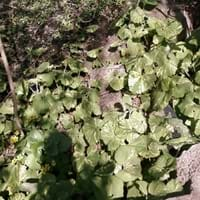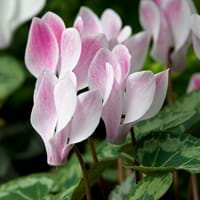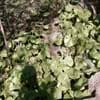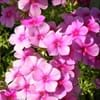Life Span
Perennial
Perennial
Type
Herbs
Flowering Plants, Tubers
Origin
China, Japan, Korea
Europe, Mediterranean Basin, Middle East, North Africa, Somalia
Types
Not Available
Cyclamen Africanum, Cyclamen Alpinum, Cyclamen Cilicium, Cyclamen Coum
Number of Varieties
Not Available
Habitat
gardens, Grassland, Homesteads, Open areas
Alpine Meadows, Rocky areas, Woods
USDA Hardiness Zone
5-9
5-9
Sunset Zone
2a, 2b, 3a, 3b, 4, 5, 6, 7, 8, 9, 10, 14, 15, 16, 17, 18, 19, 20, 21, 22, 23, 24
15, 16, 17, 18, 19, 20, 21, 22, 23, 24
Habit
Clump-Forming
Clump-Forming
Flower Color
Light Yellow, Ivory
Pink, Purple, White
Flower Color Modifier
Bicolor
Not Available
Fruit Color
Not Available
Brown
Leaf Color in Spring
Green, Light Green, Light Yellow, Ivory
Several shades of Green
Leaf Color in Summer
Green, Light Yellow, Ivory
Not Available
Leaf Color in Fall
Green, Light Yellow, Ivory
Green, Silver
Leaf Color in Winter
Not Available
Green, Silver
Leaf Shape
Round
Heart-shaped
Plant Season
Spring, Summer, Fall
Autumn, Spring, Summer, Winter
Sunlight
Partial shade, Full Shade
Indirect sunlight
Type of Soil
Clay, Loam, Sand
Clay, Sandy, Well drained
The pH of Soil
Acidic, Neutral, Alkaline
Acidic
Soil Drainage
Poorly Drained
Well drained
Bloom Time
Early Spring, Late Winter
Autumn, Spring, Summer
Tolerances
Wet Site
Not Available
Where to Plant?
Ground, Pot
Container, Ground, Pot
How to Plant?
Divison, Stem Planting
From bulbs, Seedlings
Plant Maintenance
Medium
Medium
Watering Requirements
Allow soil to be completely dry in between waterings, Keep ground moist, Needs 2-3 times watering per week, Over-head watering, Requires watering in the growing season
Do not water frequently, It cannot sustain wet-feet, Keep the ground moist but not water-logged, Prefer drip-irrigation instead of Over-head watering, Water when soil is dry
In Summer
Lots of watering
Lots of watering
In Spring
Moderate
Moderate
In Winter
Average Water
Average Water
Soil pH
Acidic, Neutral, Alkaline
Acidic
Soil Type
Clay, Loam, Sand
Clay, Sandy, Well drained
Soil Drainage Capacity
Poorly Drained
Well drained
Sun Exposure
Partial shade, Full Shade
Indirect sunlight
Pruning
Remove deadheads, Requires very little pruning, Shape and thin as needed
Cut or pinch the stems, Prune if you want to improve plant shape, Prune ocassionally, Prune to control growth, Prune when plant is dormant, Remove dead leaves, Remove dead or diseased plant parts
Fertilizers
All-Purpose Liquid Fertilizer
All-Purpose Liquid Fertilizer
Pests and Diseases
Pests and diseases free, Red blotch
Aphids, Botrytis Cinerea, Gray mold, Mice, Mites, Root weevil, Slugs, Snails, Squirrels
Plant Tolerance
Wet Site
Drought
Flower Petal Number
Not Available
Single
Foliage Texture
Bold
Medium
Foliage Sheen
Glossy
Matte
Attracts
Not Available
Not Available
Allergy
no allergic reactions
Respiratory problems
Aesthetic Uses
Showy Purposes
Showy Purposes
Beauty Benefits
Not Available
Not Available
Environmental Uses
Air purification
Air purification
Medicinal Uses
No Medicinal Use
Digestive disorders, Menstrual Disorders
Part of Plant Used
Whole plant
Root, Stem
Other Uses
Not Available
Showy Purposes, Used as an ointment
Used As Indoor Plant
Yes
Yes
Used As Outdoor Plant
Yes
Yes
Garden Design
Bog Garden, Container, Feature Plant, Water Gardens
Not Available
Botanical Name
PETASITES japonicus 'Variegatus'
Cyclamen Persicum
Common Name
Giant Butterbur, Japanese Butterbur, Variegated Butterbur
Cyclamen or Florist's Cyclamen
In Hindi
variegated butterbur
Sikalemen
In German
bunte Pestwurz
Zyklamen
In French
pétasite panachée
Cyclamen
In Spanish
butterbur abigarrado
Ciclamen
In Greek
διαφοροποιημένα butterbur
κυκλάμινο
In Portuguese
butterbur variegada
Cíclame
In Polish
barwny Lepiężnik
Cyklamen
In Latin
varius butterbur
Cyclamīnos
Phylum
Not Available
Anthophyta
Class
Not Available
Dicotyledonae
Family
Asteraceae
Primulaceae
Clade
Angiosperms, Asterids, Eudicots
Not Available
Tribe
Senecioneae
Cyclamineae
Subfamily
Not Available
Myrsinoideae
Season and Care of Variegated Butterbur and Cyclamen
Season and care of Variegated Butterbur and Cyclamen is important to know. While considering everything about Variegated Butterbur and Cyclamen Care, growing season is an essential factor. Variegated Butterbur season is Spring, Summer and Fall and Cyclamen season is Spring, Summer and Fall. The type of soil for Variegated Butterbur is Clay, Loam, Sand and for Cyclamen is Clay, Sandy, Well drained while the PH of soil for Variegated Butterbur is Acidic, Neutral, Alkaline and for Cyclamen is Acidic.
Variegated Butterbur and Cyclamen Physical Information
Variegated Butterbur and Cyclamen physical information is very important for comparison. Variegated Butterbur height is 60.00 cm and width 120.00 cm whereas Cyclamen height is 0.54 cm and width 0.75 cm. The color specification of Variegated Butterbur and Cyclamen are as follows:
Variegated Butterbur flower color: Light Yellow and Ivory
Variegated Butterbur leaf color: Green, Light Green, Light Yellow and Ivory
Cyclamen flower color: Pink, Purple and White
- Cyclamen leaf color: Several shades of Green
Care of Variegated Butterbur and Cyclamen
Care of Variegated Butterbur and Cyclamen include pruning, fertilizers, watering etc. Variegated Butterbur pruning is done Remove deadheads, Requires very little pruning and Shape and thin as needed and Cyclamen pruning is done Cut or pinch the stems, Prune if you want to improve plant shape, Prune ocassionally, Prune to control growth, Prune when plant is dormant, Remove dead leaves and Remove dead or diseased plant parts. In summer Variegated Butterbur needs Lots of watering and in winter, it needs Average Water. Whereas, in summer Cyclamen needs Lots of watering and in winter, it needs Average Water.





